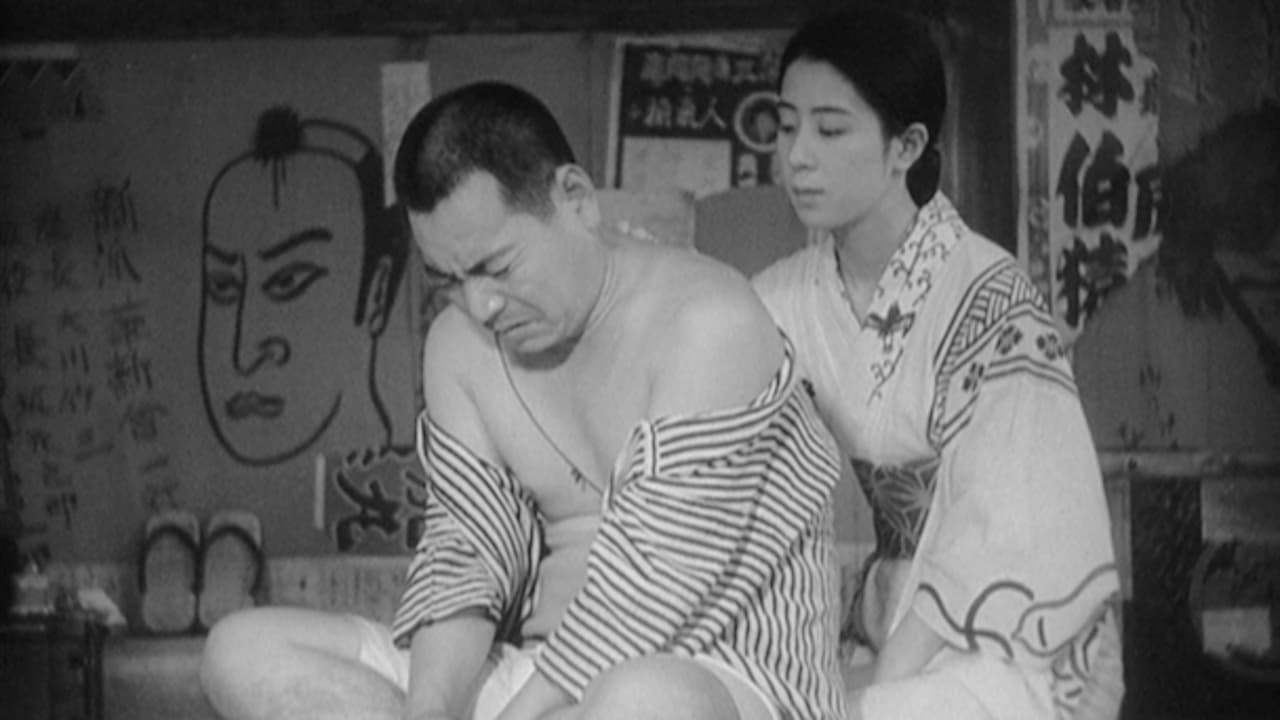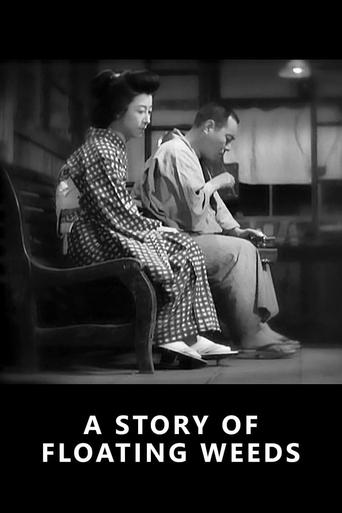

Viewed on DVD. Intertitles = ten (10) stars; restoration = nine (9) stars. Director Yasujiro Ozu's first time at bat with this story line (he remade the same story--pretty much shot for shot--25 years later). From dramatic delivery and audience-engaging perspectives, this photo play is by far his best iteration (the first time is charm; the second just pretty to look at). Basic film building blocks (script, directing/editing, acting, and cinematography/lighting) are fully exploited and integrated here demonstrating that (when a director so desires) overall a film can be far greater than the sum of its technical components. And this movie's craftsmanship benefited greatly by being mounted at the peak of (and a bit beyond) the golden years of silent films in Japan (sound came into full bloom in Japan a few years after it occurred in the West). Acting can often be mesmerizing with performances touching but not crossing too far over into the blatant melodramatic. Film dynamics and audience interest are also enhance by eschewing long, slow takes and with the actor(s)/actress(es) who are in frame and facing the camera always the ones delivering the lines. No "back acting" in this movie. But what would become the director's other trademarks are already in play including: static camera placements (the camera seems to be just sitting there waiting for something (anything!) to happen); laundry lines; trains; and ugly overhead power lines. Opening credits are shot against a burlap backdrop as are all future films from this director. There are many memorable scenes including one of an actress casually strolling along the top of the curved rail of a train track in 3-4 inch high platform sandals! Intertitles seem okay (but others who read Japanese symbols better than I may disagree) and are just the right lengths. Restoration is quite good--the film looks much younger than it really is. However, all credits and titles exhibit frame jitters, some wear-related artifacts were ignored, and dark (and fade to dark) scenes often show age-related deterioration. The piano score was especially composed for this DVD, and is excellent. Highly recommended. WILLIAM FLANIGAN, PhD.
... View MorePeople float, their stories, the roles they perform and worlds they bring to life, this is the main thrust of the film. So I have been recently surveying early Ozu as part of two personal quests: the first of these is where I'm looking for images of some purity from the first hours of cinema. The film is fine in this regard, Ozu's most renowned silent film about a kabuki actor returning with his troupe to his hometown to confront a difficult past. There is concentrated mind, a clear gaze. Composed shots, especially outdoors. But hardly any noticeable difference from his previous films. Why this is held in comparatively higher esteem than say Dragnet Girl or Passing Fancy, I posit has a lot to do with a more overt Japaneseness.Earlier Ozus were distinctly modern: I Was Born But.. about schoolkids growing up in a rapidly Westernized Japan, Dragnet Girl about a young boxer drawn to the excitement of gangster life. Tokyo Woman unraveled like what was called a 'kammerspiel' in Weimar Germany. There was no benshi narrating these, as was the traditional norm adopted from Japanese theater. They employed the Western fashion of intertitles. Western garb for the leading players. References to movies, music records, boxing, corporate or factory work.But this one has some of that exotic appeal that first fascinated the rest of the world about Japan. The same thing as the Mizoguchi revival in the 50's. For some reason, Western viewers are a lot more receptive to Japanese films that validate idealized preconceptions.Now my other quest where this fits into, is films that visually or otherwise exemplify the karmic resonances that move our worlds. What kindles our emotional fires. In the best of cases, this means a storytelling part governed by a set of abstract parameters that control how we tell that story. How the world is in turn colored and appears to us. At around this time, in the West this was primarily being developed as film noir.The Japanese are some of the most reliable to turn to for this: cultural seclusion cultivating purity, plus many actual practices for doing so - from gardening to making tea. The effort is to embody the world as it comes into being, this is the level that Western art has rarely managed to attain. It's worth getting to know about these things, if only to shatter those preconceptions. A tea ceremony is not about pomp or quaint etiquette but meditation. So here we have a man who has abandoned his child and run off to play roles on a stage. Turns out he has become known for what is grouped together in kabuki as bandit plays, folk legends about heroic scoundrels. (a famous example of these that you have the chance to see adopted to film and from this era, is Kochiyama Soshun by Sadao Yamanaka).Presumably this is how he views himself, a man who is wrong by conventional standards but deep inside pure. Now and then he returns home, again playing a role. This early misdeed returns to haunt him: his son is seduced by a woman from his troupe, another actor performing a role. He learns the truth and in turn seems ready to run off. The whole thing replicates itself, recycling the same floating story. Only forgiveness can sever the destructive karma that has been set in motion.Again this is fine and the film worth watching. What it's missing however, I believe is an additional layer that resolved ordinary drama on stage, conflating performance of the inner story with the one we are watching as our film about it. Transitory but precious humanity, rendered visually as a play passing through town. A lot of room for improvisation, as real life shapes the thing.Imbalance that reflects impermanence is the key. Instead we get balanced drama.If you have time and the resources and as example of what I'm talking about, I recommend that you look for a silent French film called Eldorado from '21, where a female dancer sublimates motherly woes into seductive dance. It is more primitive in some ways, but in others not.
... View MoreI was able to see The Story of Floating Weeds for the first time recently, thanks to the Criterion Collection's DVD.I was led to it when I came across Roger Ebert's list of his ten favorite films (written some time ago).In his notes, Ebert claims Ozu shows us a "different cinematic language" but I find that kind of talk so much blather. Ozu uses his shots effectively to allow the actors to communicate the emotions being portrayed, especially necessary in this silent film.A third rate company of traveling actors returns to a town after four years. The leader of the troupe had abandoned his lady in this town years before in order to tour with his company. He has fathered a son by the woman, whom he visits whenever he can, but his paternity is kept secret from his son.What follows is the exposure of the secret and the effect it has on the lives of everyone involved, and some innocent bystanders as well.The camera is almost always objective, the acting style is somewhat less melodramatic than in American silent films. There are excellent performances by all.No time period is given for the story, but I have to assume it is earlier than the year the film was made (1934) because there are no automobiles, no radios, no telephones.The enjoyment of Floating Weeds lies in the story itself and the ability of the director to tell it compellingly. If you demand car chases or food fights, this is not for you.The Criterion DVD allows you to watch with or without the specially commissioned score. For first viewing, I recommend without.
... View MoreFor a movie released in 1934, it is very odd that this is a silent film. While I love Japanese cinema and have seen many, many movies from this country, this is about the oldest one I have seen and couldn't understand it being silent. Perhaps they were just VERY far behind in switching to "talkies"--although even in Europe, Sound movies were pretty much the norm by about 1931 or so.Apart from this odd feature of the film, I found it to be almost a carbon copy of the remake of this film that the director made 25 years later. In fact, they were so similar, I really didn't find it all that necessary to have seen both. This, combined with the better technical merits, make the remake a better viewing experience for the average viewer--though film historians and cinephiles will probably be interested in both versions. Fortunately, the Criterion release includes BOTH versions! What a deal! The story is a melancholy tale of an itinerant actor who owns a troop of small-time actors. After many years, he returns to a small town where his illegitimate son lives with his birth mother. The boy, now nearly a full-grown man, thinks that the actor is his uncle--a ruse that has been perpetuated all his life. While I could discuss this central relationship further and discuss the twists and turns the plot takes, it would be best you see it for yourself. It is a rewarding and sad tale that involves regrets, responsibility and "what might have been"--just the sort of movie that makes you think and doesn't give easy answers. An excellent film well worth seeing.
... View More